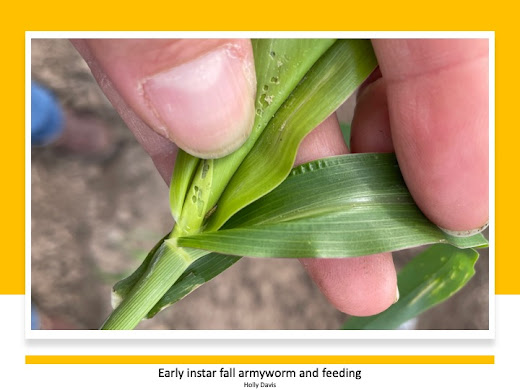It’s that time of year, yellownecked caterpillars, Datana ministra, are once again active in oak trees. This generation is nearing maturity and, although the frass (or poop) “raining” out of trees, unsightly defoliation, and caterpillars falling and crawling out of oaks can be annoying, it is too late to gain much by eliminating this generation. For the most part they have completed feeding and are moving out of the trees where they will pupate in the soil. Killing mature caterpillars to prevent them from pupating and thus re-infesting an area has not been shown to be effective. This includes the use of systemic insecticides (soil drenches) or treating the soil for pupating caterpillars. The exception being, if you can see branch tips where a large group of these caterpillars are feeding, you can trim these areas and destroy larvae. However, this does not guarantee that your oak won’t be infested again later in the season.
In most parts of the U.S. there is only 1 generation a year. However, based on last years’ experience, we have another 1-2 generations ahead of us here in the LRGV. Last year, our second generation became active in early September. While it can be distressing and unsightly, the defoliation caused by yellownecked caterpillar feeding will not cause long-term damage to healthy, well-established trees. If you would like to control the next generation, it will be important to keep a close eye on oak trees and take action as soon as caterpillars begin feeding. Chemical options include Bacillus thuringiensis var. kurstaki (biorational) and most home landscape insecticides labelled for caterpillars (conventional). Successful control depends on good coverage of the caterpillars (these are all contact insecticides), and application timing (when larvae are small).
For more information on the biology and management of yellownecked caterpillars, please click here and here.











